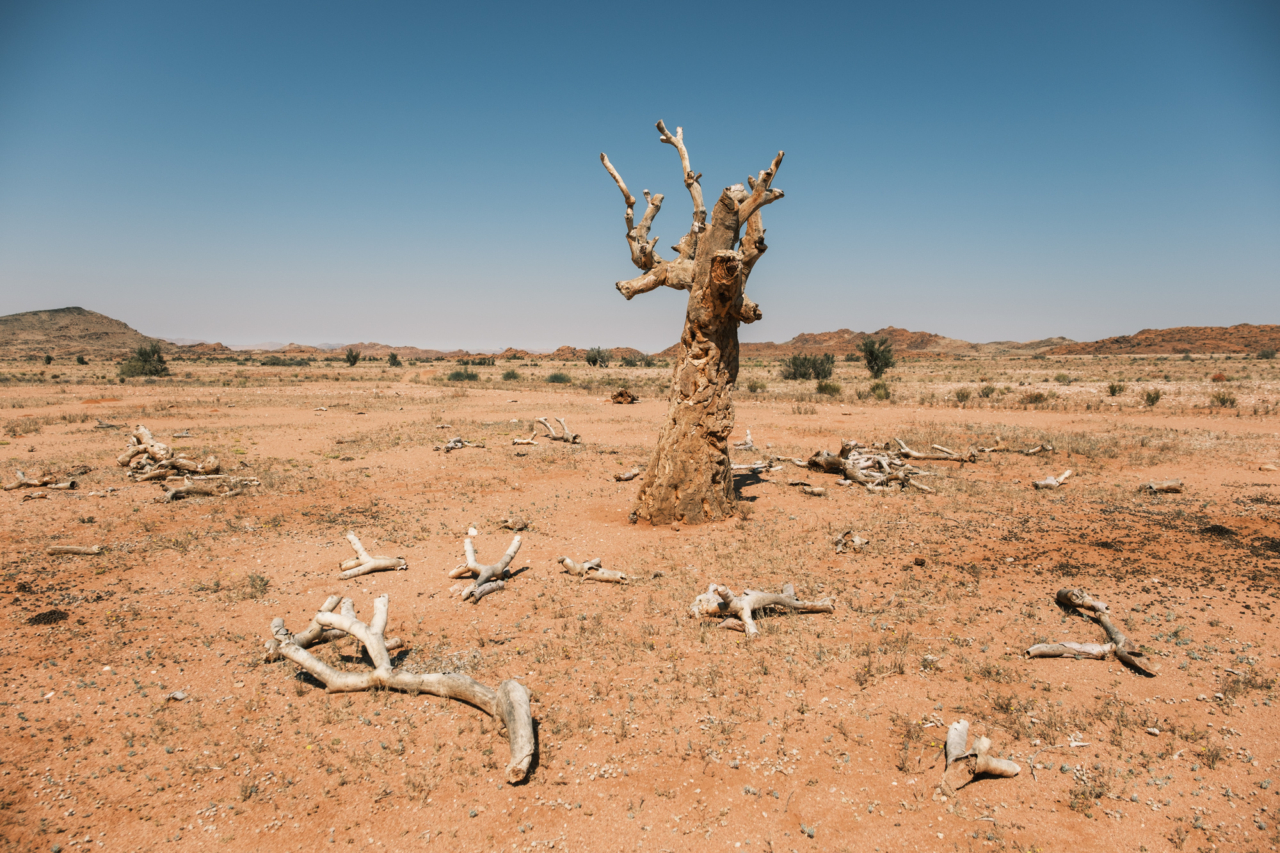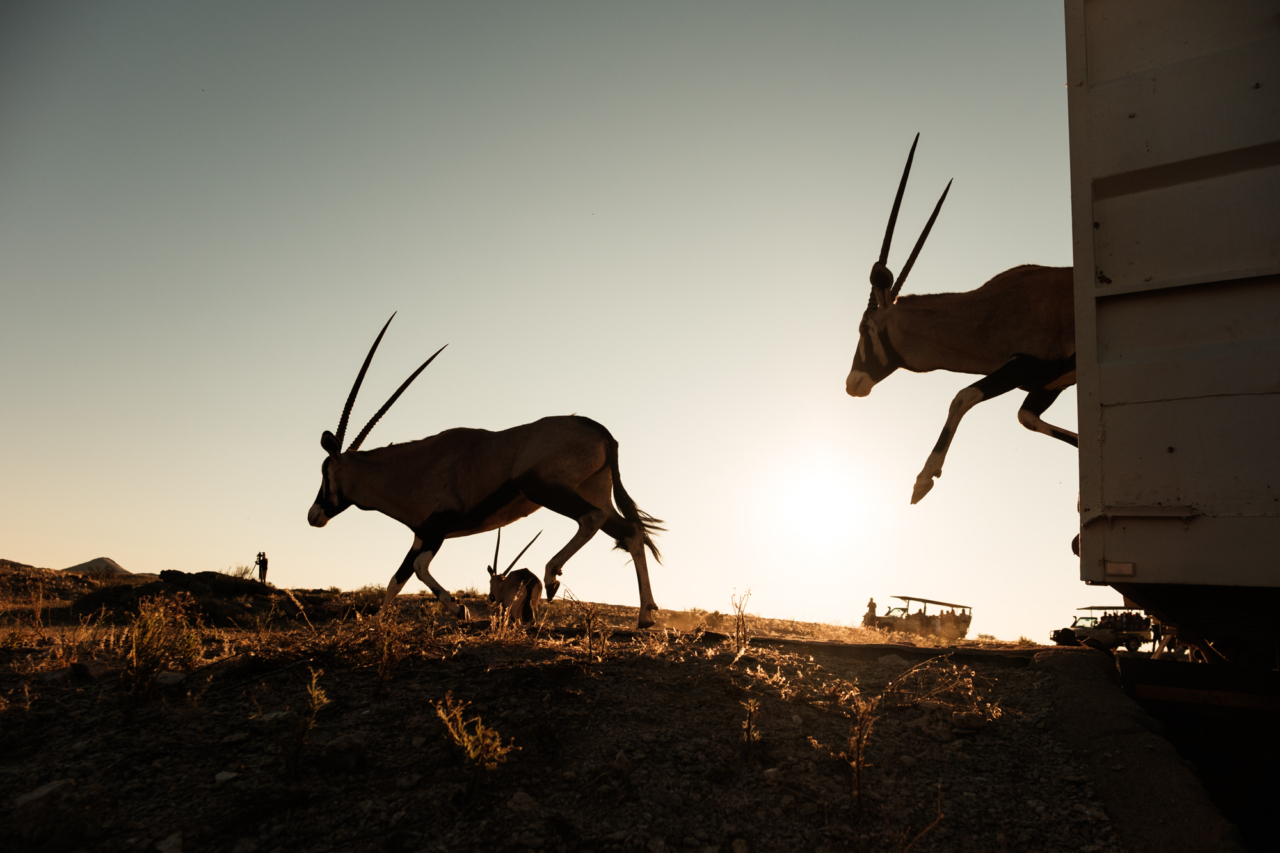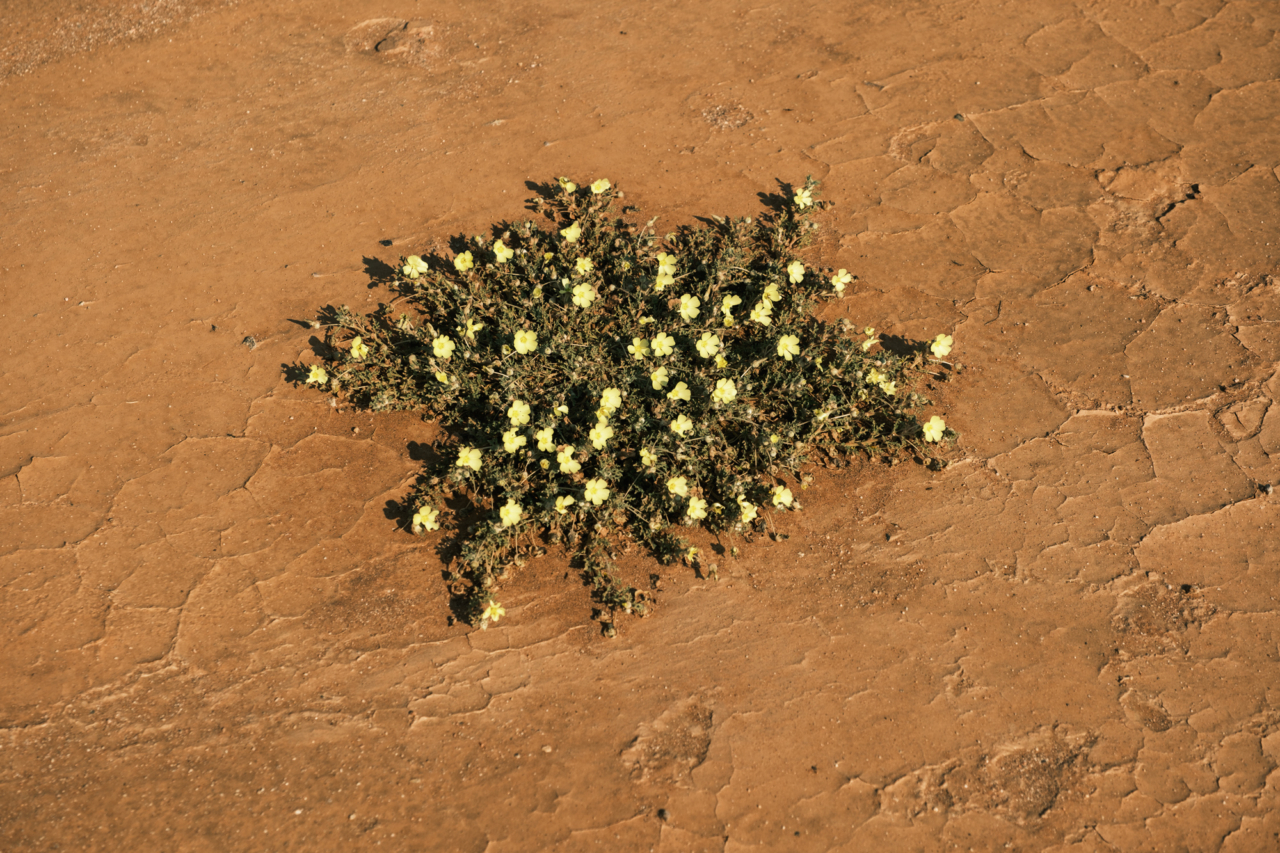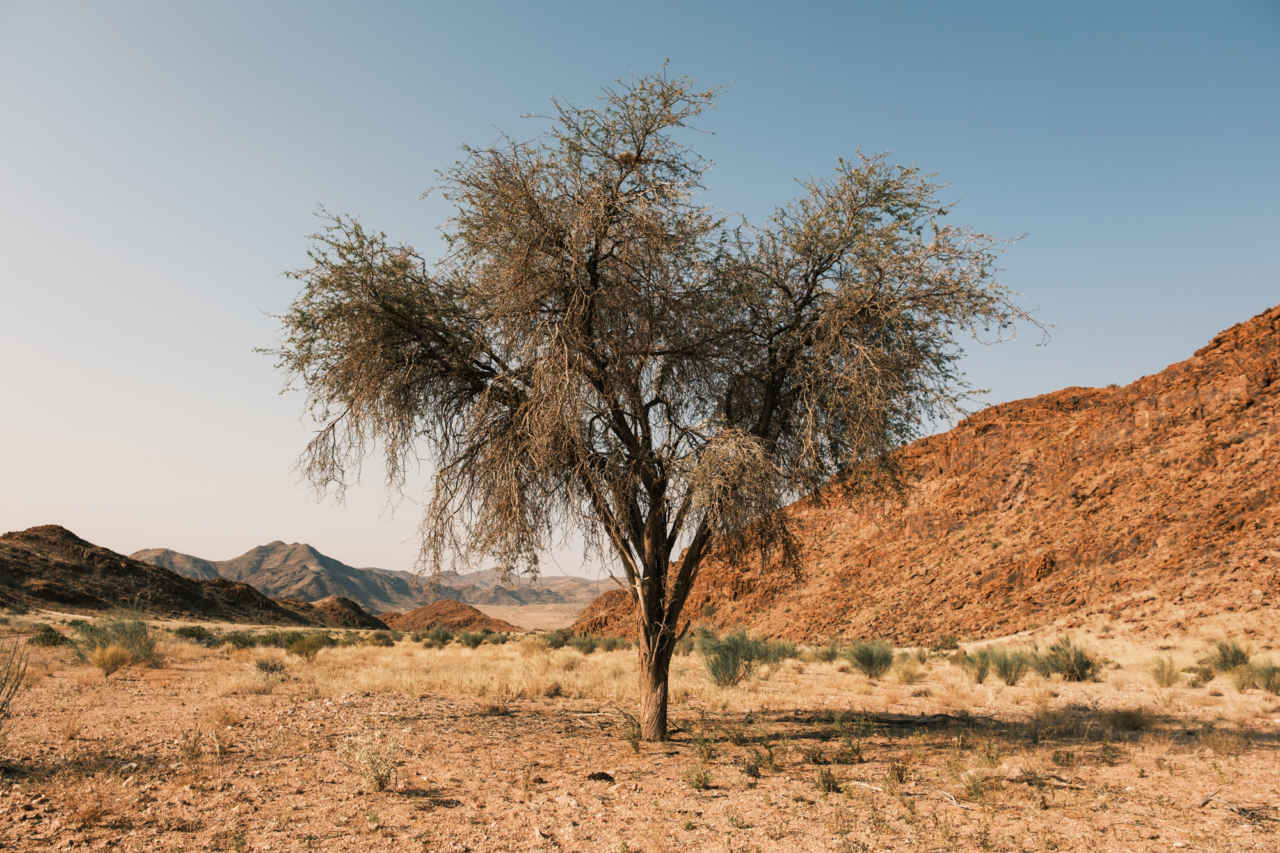
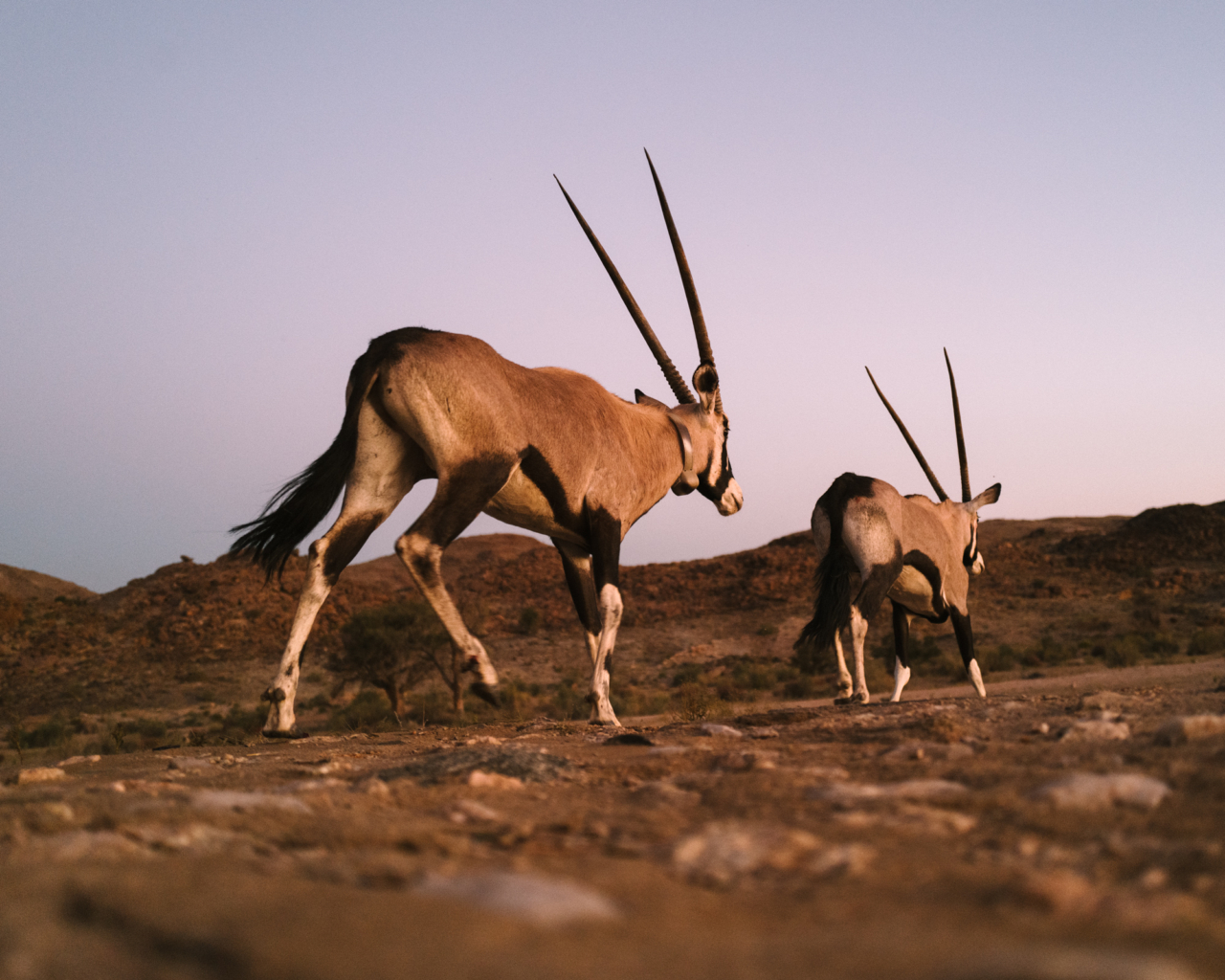
Photographs courtesy of Rolex / Gary Van Wyk
WORDS BY JASMINE HARDY
Moments before the sun set behind Namibia’s burnt-orange mountains, a large truck rumbled onto the desert landscape below. Inside were ostriches, springbok, and oryx, restless and stamping around their transport crate. Members of the local tribe and a handful of journalists watched from safari vehicles as conservationists readied the doors. Soon, the animals would charge into their new home: the Orange River-Karoo conservation area.
Wildlife translocation projects don’t always go well; sometimes, the animals don’t survive the journey. For the Orange River-Karoo Conservation Area, a nonprofit working to restore 2.4 million acres in the country’s south, this inaugural release was years in the making—and they were prepared. Once the doors finally opened and each group of animals clumsily stumbled out before striding across the land as if they’d always been there, any potential worry dissolved. One emotion was unmistakable on every face: joy.
“Honestly, it was one of the happiest days ever, in terms of how many years and days have gone into getting us to where we are today,” said Andreia Pawel, cofounder of ORKCA.
The Orange River-Karoo region has been around for millennia, but its ecosystem suffered greatly in the last two centuries as southern Namibia lost 90% of its wildlife to poaching, mining, and the conversion of open land to livestock farming, according to ORKCA. Where 10,000 elephants and 3,000 hippos once roamed the region, there are now zero—the largest extinction of megafauna in sub-Saharan Africa. A robust population of 20 million springbok has dropped to just 5,000, while giraffe numbers tumbled from 6,000 to 30. These metrics are equally bleak for the land’s historic predators. There were once 2,000 leopards throughout the landscape. Today, there are just 10 remaining. Lion numbers have cratered from 3,000 to total extinction.


Even so, the story of conservation work is hardly one of defeat. While many experts have completely written off the Orange River-Karoo, as is the case for many desert landscapes, ORKCA formed in 2020 when its members recognized the potential for restoration. Three years later, the Rolex Perpetual Planet Initiative, which has committed itself to the protection of the planet since 2019, also recognized ORKCA’s vision, and decided to aid in the organization’s first wildlife release.
The unique ecology of the ORKCA region spans three different biomes: the desert, the driest of biomes; the Nama Karoo, characterized by low shrubs and rugged terrain; and the Succulent Karoo, the world’s only arid biodiversity hotspot—making the Orange River-Karoo an ecotone, a natural crossroads and a “catalyst for evolution.”
“When you’re talking about research in the far south, in the desert, everyone laughs and asks you what is there?” said ORKCA chief executive Nabot Mbeeli. “When you really start looking closely, close to the surface, you’ll be amazed by the amount of life that is actually there.”
Local tribes have always known this. “Karoo” is derived from the Khoisan word meaning “land of thirst.” For the Nama—the largest and only remaining group of the KhoiKhoi people, now living in Namibia’s Karas region—the landscape is demanding, but not hopeless. Life begets life; and when people, plants, and wildlife live in symbiosis with the living land, it always gives back. The Nama people rely on this reciprocity.
“Traditional healers depend on indigenous species for remedies, herders rely on healthy grazing ecosystems, and our way of life is shaped by the balance between people and nature,” said Lizle Jacobs, a member of a local Nama women’s group called Orange River Queens.
The land’s generosity was on full display as we drove through its distinct biomes, shifting from green shrubbery to pink quartz to gravelly mountain terrain. Over the past few years, the health of the land has improved dramatically, Mbeeli says. From above, the 395,000 acres that ORKCA has set aside for conservation stand in sharp contrast to the surrounding farm communities. “There’s grass as high as and as thick as your hip because the area has had no livestock pressure; it’s just been allowed to rest for five years now,” said Mbeeli. “It’s amazing the amount of difference.”

ORKCA has been working to restore the land and ensure its viability for the remaining wildlife and for the animals they plan to continue to reintroduce—more animals like the oryx, springbok, and ostriches. Before the release, two animals from each species were collared to keep track of their whereabouts, as part of the translocation project plan.
The day after the release, a group of us followed the signal coming from ORKCA’s satellite system in a safari jeep to determine whether the animals had properly adjusted to their new habitats, including finding food and water. Across the rocks and shrubs, we spotted a mirage of pink and black plumage in the far distance. Passing around a single pair of binoculars, we confirmed the familiar cohort of ostriches. They were resting and seemed to be doing well. Later, we found the group of oryx, quickly followed by a sighting of 10 or so springbok. While springbok and oryx tend to be herd animals, ostriches are not; yet they remained together in their first 24 hours of life on the ORKCA landscape.
These are the first animals to be collared on the land; but part of ORKCA’s daily operations has always included tracking animals—it was just done by following footprints and observing dung piles rather than chasing a satellite signal. The new collaring method is part of a broader strategy that uses technology to track migration patterns and collect data that will eventually feed into the research center ORKCA is now building.
“We are understanding how they’re moving within this section of the landscape, how they will be dispersing across a greater landscape, and so on,” Mbeeli said. “It’s a massive landscape, and trying to study without using tech would be a lot more challenging. So, this is a first step in collecting the data.”


Restoration and rewilding of the Orange River-Karoo includes a lot of grunt work, such as long days spent removing fences previously put up by farmers to protect livestock from wildlife encounters. ORKCA is also installing radio towers to help ranger teams communicate across the field. With support from the Rolex Perpetual Planet Initiative, more than 90 camera traps have also been placed throughout the property and at watering holes to capture passing wildlife—and to detect potential threats, including poachers. In this way, ORKCA helps boost the animals’ odds of survival in the conservation area.
“A lot of conservation is actually taking down fences, cleaning out water holes,” Pawel said. “It’s very hard work, and it’s long days in the field, so it’s really important for us to also get hands-on and have that connection with wildlife, the ones that we’re actually passionate about, and that inspires us as a team.”
While tracking the released animals, we came across a range of animated wildlife—a curious kudu staring from a mountain top, a family of raucous baboons, two Karoo korhaan birds performing a mating dance—but we also came across death. Maggots engulfed the bloated belly of a fallen oryx, its spear-sharp horns tangled in a wiry bush. Our tour guide, Adriaan Mulder, who is also a reservation manager for part of the region, inspected the animal and confirmed it wasn’t one of the releases. This oryx had been dead for at least a couple of days, he said, and hypothesized the likely cause of death as a bite from a poisonous snake.
Climate change has also made its mark on the ORKCA landscape. As the driest country in the sub-Sahara, Namibia experiences some of the most dire effects of a warming world. The southern area’s endemic plant species are in decline, including a range of succulents and the ubiquitous quiver tree. The area’s wetlands are threatened, too. The Orange River, which divides South Africa and Namibia and is considered a lifeline in the region, often suffers from drought conditions while pesticides from nearby commercial farms threaten water quality.


But as the ecological health of the Orange River-Karoo conservation area improves, signs of resilient life are returning in remarkable ways. “We’ve had [some years] that we get good rain, and we start seeing species of flowers that just pop up that we’ve never seen before in areas that we thought were barren,” said Pawel. “Then, all of a sudden, it’s this amazing vegetation that is there.” The Orange River feeds these plants, so the health of the waterway is paramount. ORKCA now plans to make it part of a transboundary park, so that the river no longer serves as a porous national border. Instead, it will form the core of an area designed to protect biodiversity, wildlife, and ecological processes.
ORKCA’s efforts have renewed interest in the region, drawing geologists and botanists back to a landscape that was once abandoned. That momentum is likely to spur further research and more conservation work.
While the Orange River-Karoo still bears the scars of loss, the memories of its former abundance linger in its water, plants, and the animals that still roam its plains, waiting for more to return. Together with the Indigenous stewards of this land, ORKCA is committed to bringing that vision back. And if the organization’s first wildlife reintroduction—marked by song, dance, and interspecies communion—is any indication, this is only the beginning.

Rolex hosted Jasmine Hardy on a trip to Namibia in September 2025.
Correction,
November 13, 2025 12:49 pm
ET
This article has been updated to reflect the details of ORKCA's partnership with and support from the Rolex Perpetual Planet Initiative.
‘The Land of Thirst’: Inside the Fight to Rewild Southern Namibia

